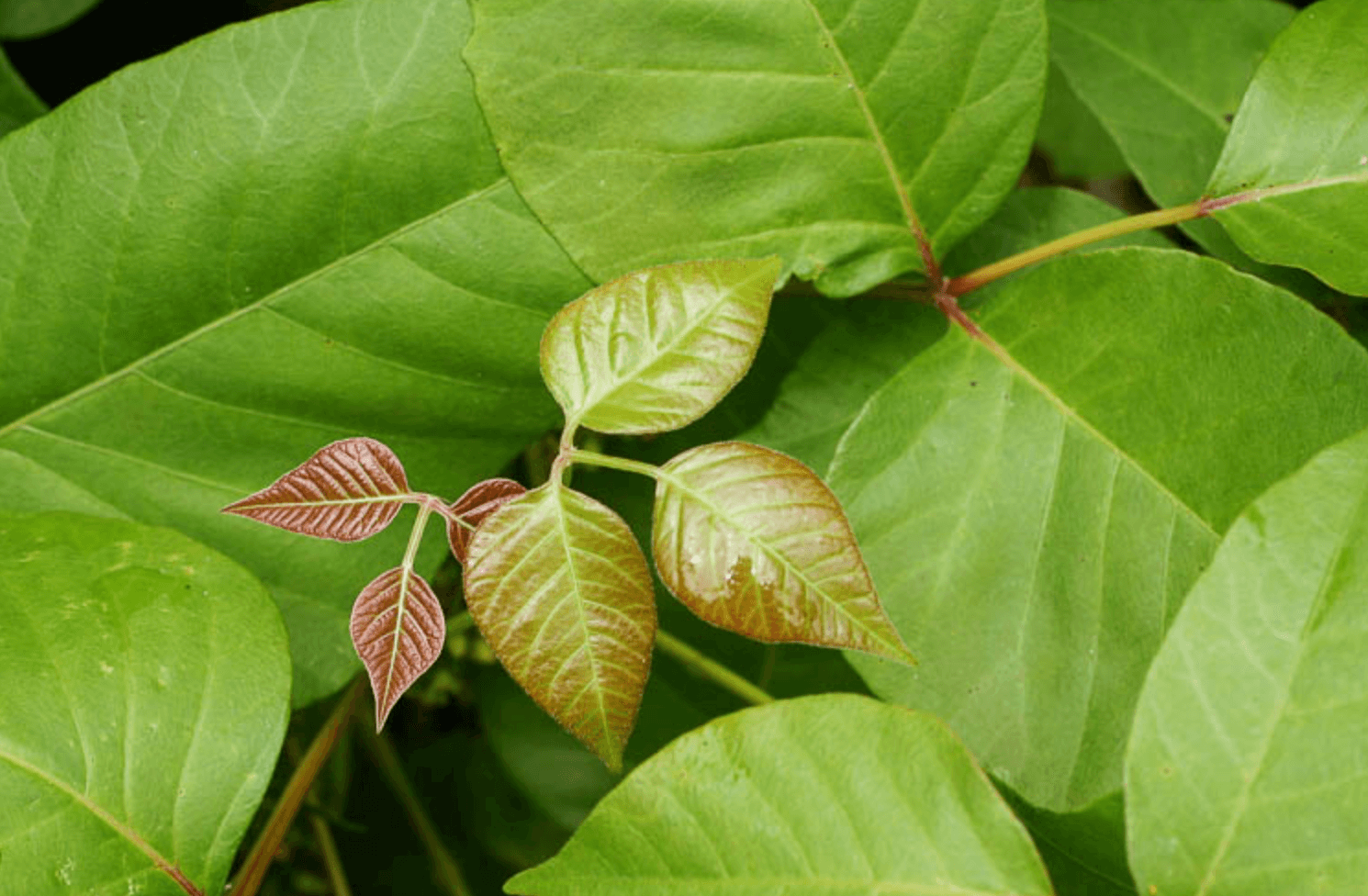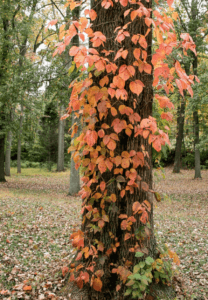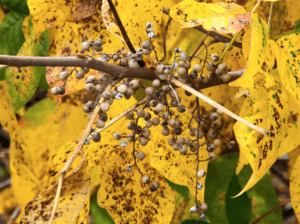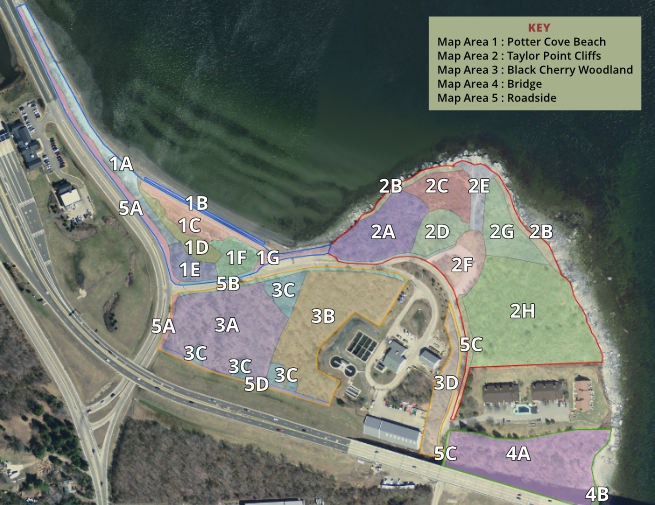Common Name: Poison Ivy
Specific Name: Toxicodendron radicans
Known Occurrence at Taylor Point:
Map Areas: Beach 1A, Beach 1C, Beach 1D, Beach 1E, Beach 1F, Cliffs 2B, Cliffs 2H, Woodlands 3A, Woodlands 3B, Woodlands 3C, Woodlands 3D, Bridge 4A, Roadside 5A,
Category: Native, Vine

Ecological Considerations:
Toxicodendron radicans is a poisonous, robust, woody flowering vine that grows is a wide variety of habitats. It often grows along the ground. It also climbs up trees or posts or other vertical structures, attaching via a system of aerial rootlets, and poison ivy also appears often in a shrub-like form, growing as much as 3 or 4 feet high. The plant has no thorns. The shiny leaves are trifoliate and range in color from light green to dark green and turn bright red, orange or yellow in the autumn. The leaf clusters of three alternate on the vine; they do not grow opposite one another.
Poison Ivy is perhaps best known for its capacity to inflict contact dermatitis, an itchy, irritating, and sometimes painful rash in most people who come in contact with it. The rash is caused by urushiol, a clear liquid compound in the plant’s sap.
Poison Ivy can reproduce either vegetatively or sexually. It is dioecious and ordinarily flowers from May to July. It produces yellowish or light green flowers that appear in clusters above the leaves. The berry-like fruit matures into a grayish drupe by late summer or early autumn and is often consumed by birds and small animals. Seeds are spread primarily by animals and remain viable after passing through the digestive system.
Invasive plants at Taylor Point that may possibly be replaced successfully by this plant:
Propagation Mechanisms/Strategies for Encouraging its Establishment: Although it is a native species, owing to its tendency to cause contact dermatitis, habitat managers are disinclined to encourage the establishment or spreading of Poison Ivy.
Best Planting Practices/Options and Pros and Cons of Options: It is best not to encourage the growth of Poison Ivy in areas where people will be working or walking.
Key Issues Regarding its Ecology ( e.g. Which Invasives Threaten it, What Conditions Favor it)
Associated Ecological Benefits: No ecological benefits of Poison Ivy are reported, save the use of its berries as a food source for birds or small animals. This “benefit” however is offset by the fact that the ingestion of the seed by various creatures, often leads to the spread of the poison ivy even further afield; an undesirable outcome.
Availability of Locally Sourced Seeds and Plants:
Case Studies of Native Plant Establishment Efforts/Lessons Learned
Additional photos:




Sources cited:
Key Words:
Native Woody Vines
Poison Ivy
Toxicodendron radicans
